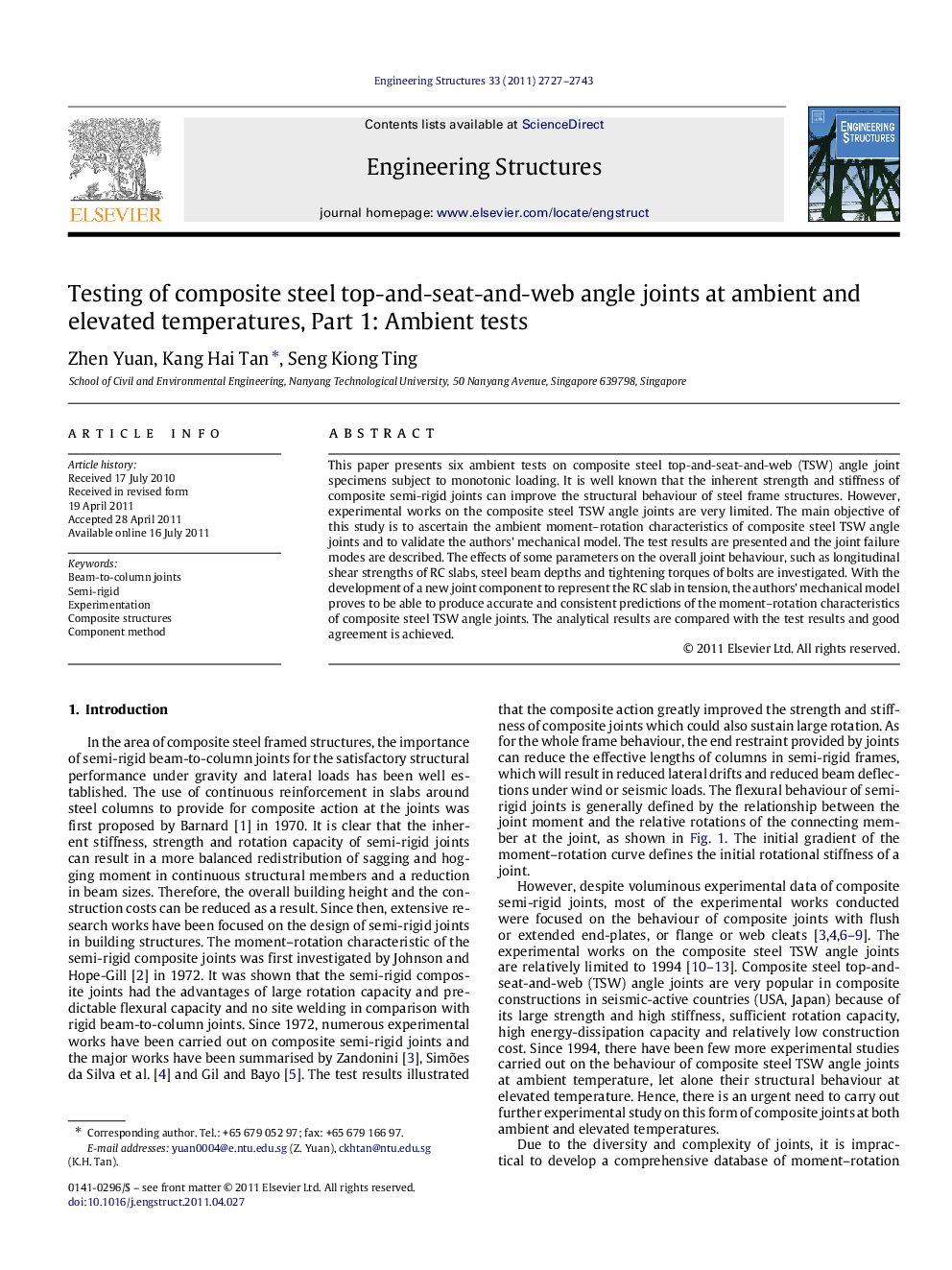| Article ID | Journal | Published Year | Pages | File Type |
|---|---|---|---|---|
| 267652 | Engineering Structures | 2011 | 17 Pages |
This paper presents six ambient tests on composite steel top-and-seat-and-web (TSW) angle joint specimens subject to monotonic loading. It is well known that the inherent strength and stiffness of composite semi-rigid joints can improve the structural behaviour of steel frame structures. However, experimental works on the composite steel TSW angle joints are very limited. The main objective of this study is to ascertain the ambient moment–rotation characteristics of composite steel TSW angle joints and to validate the authors’ mechanical model. The test results are presented and the joint failure modes are described. The effects of some parameters on the overall joint behaviour, such as longitudinal shear strengths of RC slabs, steel beam depths and tightening torques of bolts are investigated. With the development of a new joint component to represent the RC slab in tension, the authors’ mechanical model proves to be able to produce accurate and consistent predictions of the moment–rotation characteristics of composite steel TSW angle joints. The analytical results are compared with the test results and good agreement is achieved.
► We carried out 14 tests on composite TSW angle joints at ambient and elevated temperatures. ► Experimental moment–rotation curves at ambient and elevated temperatures were obtained. ► The test results validated the authors’ mechanical model predictions. ► Composite TSW angle joints have high stiffness, strength and good ductility. ► Effects of temperature, beam depth, bolt torque and slab longitudinal shear strength were investigated.
